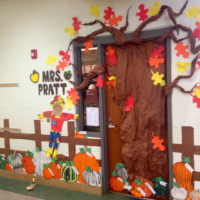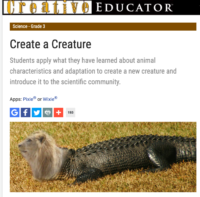Project Based Learning Science in a Year
How to jump into elementary planning
By Jennifer Pieratt
Let’s face it: Back-to-school planning is a long and arduous task for many educators. Whether it’s because of the enormous amount of work involved, not knowing where to start, or having to intertwine your lesson plans with external benchmarks, planning project based learning science can quickly become overwhelming. What you might not realize, however, is that tricky requirements like the Next Generation Science Standards can actually work to your advantage when preparing for the year ahead. Dive into this tailored calendar to discover how you can use different NGSS “bundles” to create engaging project based learning science classes centred around ‘real world’ activities. Keep in mind that the ideas proposed below were developed for elementary school classes, but can be easily be adapted to fit any grade.
Fall Planning for Back-to-School
The first thing you want to consider when planning your project based learning science lessons is how to transform your class into a safe learning environment. As discussed in the Educational Learning journal, research confirms that building a sense of community in a classroom makes students more likely to be academically driven, to act altruistically, and to develop their social skills. You can actually work on this while getting through NGSS standards like LS1 and LS2. Try to start the year by writing a class community pact that mimics animals in nature and what they need to do to survive. You could also have students create two voice poems about animals and classmates’ survival needs. Otherwise, for LS1-1 specifically, you can take advantage of the changing colours of the leaves outside your classroom to introduce the life cycle of plants. Students could just make a simple diagram of a plant’s life, but stop motion films or time lapse videos of the changing leaf colours or growing seedlings can also be excellent final products for your project based learning science class.
Winter Project Ideas
In the wintertime, humans like to bundle up and huddle together with warm food and drinks – and so do animals. You can cover the LS3 1-2 and LS4 2-4 NGSS standards in your project based learning science classes by looking at how animals adapt to their environment. One extremely important topic to examine is the effects of climate change and habitat destruction on animals and plants. Allison Graham states that climate change is one of the rare “interdisciplinary” issues that “asks us to consider the world beyond ourselves.” Not only that, it can be used to teach important notions such as critical thinking and civic responsibility to students. We know that today’s children will be those tasked with solving tomorrow’s environmental issues; they deserve to be given the tools and knowledge to do so in a fun, adapted, and captivating way. Try to engage your class with projects about past and future animal adaptation such as writing “choose your own adventure” stories or creating a Chatterpix video in which they can get pictures of animals to talk.
One last idea for your wintertime project based learning science classes is to ask students to write a story and make some artwork about a mixed up animal. I love pairing this project with the book The Adventures of Marco and Polo! By creating a creature, students can showcase their knowledge of animal characteristics, as depicted in this example. To download this lesson plan for middle school click HERE
Springtime is Playtime
You can tackle physics in the late spring by working your way through the 3PS2 standard. Try to center your project based learning science lessons around playgrounds so that students can relate what they’re learning to their daily life. For instance, teach them about which forces interact in a specific motion like the push and pull movement of a swing. Note that weaving technology into these classes is easy with apps such as Explain Everything or ThingLink, which allow students to take pictures of their school playground and understand the physics at work in each playset. As a final product for your project based learning science class, you can make students design not only a diagram of the forces operating in a playset but a playground prototype. Ask them to explain their choices using the scientific concepts they’ve learned. Other topics you can explore as you approach the end of the year are engineering design and weather patterns from the ETS, ES3-1, and ES2-1 NGS standards. For instance, one fun project involves designing a disaster readiness kit under given constraints like cost and size.
Ultimately, planning with NGSS standards isn’t something to be feared, nor is project based learning science as a whole. If you have trouble getting started, you can explore these resources for extra help with brainstorming.
Keep in mind that by organizing your science classes according to NGSS themes, you’re making language, art, math, and social studies easier to plan since these can easily be adapted later on to support your science content. Don’t hesitate to check out my blog for further advice about project based learning science in a year. Back-to-school planning can be demanding, but captivating students is easy when you’re using NGSS standards to connect science to the real world.





